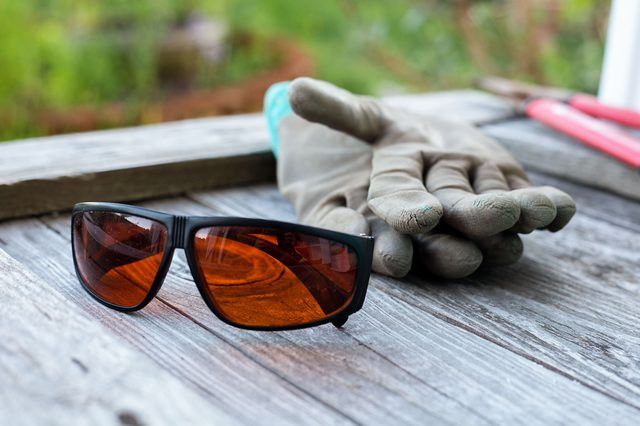Bulbs
Flower Basics
Flower Beds & Specialty Gardens
Flower Garden
Garden Furniture
Garden Gnomes
Garden Seeds
Garden Sheds
Garden Statues
Garden Tools & Supplies
Gardening Basics
Green & Organic
Groundcovers & Vines
Growing Annuals
Growing Basil
Growing Beans
Growing Berries
Growing Blueberries
Growing Cactus
Growing Corn
Growing Cotton
Growing Edibles
Growing Flowers
Growing Garlic
Growing Grapes
Growing Grass
Growing Herbs
Growing Jasmine
Growing Mint
Growing Mushrooms
Orchids
Growing Peanuts
Growing Perennials
Growing Plants
Growing Rosemary
Growing Roses
Growing Strawberries
Growing Sunflowers
Growing Thyme
Growing Tomatoes
Growing Tulips
Growing Vegetables
Herb Basics
Herb Garden
Indoor Growing
Landscaping Basics
Landscaping Patios
Landscaping Plants
Landscaping Shrubs
Landscaping Trees
Landscaping Walks & Pathways
Lawn Basics
Lawn Maintenance
Lawn Mowers
Lawn Ornaments
Lawn Planting
Lawn Tools
Outdoor Growing
Overall Landscape Planning
Pests, Weeds & Problems
Plant Basics
Rock Garden
Rose Garden
Shrubs
Soil
Specialty Gardens
Trees
Vegetable Garden
Yard Maintenance
How to Get Rid of Squash Bugs
How to Get Rid of Squash Bugs. Squash bugs (Anasa tristis) earned their name because they primarily attack summer squash plants (Cucurbita pepo), but these pests will also feed on other cucurbit family members, including pumpkins (Cucurbita maxima), cucumbers (Cucumis sativus) and melons (Cucumis melo). Squash bug feeding activity quickly damages...
Squash bugs (Anasa tristis) earned their name because they primarily attack summer squash plants (Cucurbita pepo), but these pests will also feed on other cucurbit family members, including pumpkins (Cucurbita maxima), cucumbers (Cucumis sativus) and melons (Cucumis melo). Squash bug feeding activity quickly damages the leaves, stems and fruits of these annual favorites, and small or young plants can die from their injuries. Get rid of squash bugs and enjoy a pest-free patch by using physical and chemical controls.
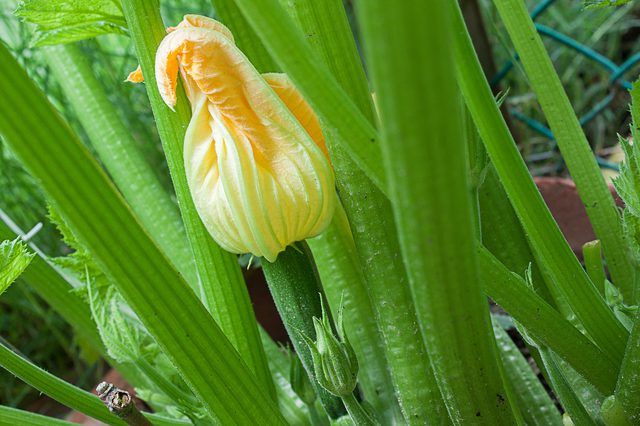
Pumpkins and yellow summer squash most commonly attract squash bugs. Protect these plants with floating row covers made from cheesecloth or fine-meshed nylon netting until they start bearing heavy blooms that attract the beneficial pollinators, which typically occurs about midsummer. Training vining cucurbit plants to grow up trellises keeps them off the ground and away from foraging squash bugs.
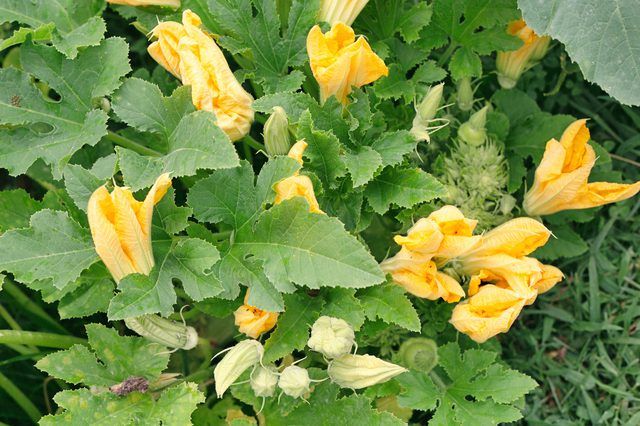
Inspect your cucurbit plants once or twice a week for squash bugs, checking beneath the leaves, around the crown and on the main stems for gray-brown adults, grayish-green nymphs and bronze- or rust-colored egg clusters. Handpick any adults or nymphs that you find and drop them into a pail of soapy water. Scrape egg clusters from your plants using a dull knife. Dipping the knife in water beforehand makes the process easier by loosening the water-soluble, sticky substance that makes the eggs stick to the leaves.
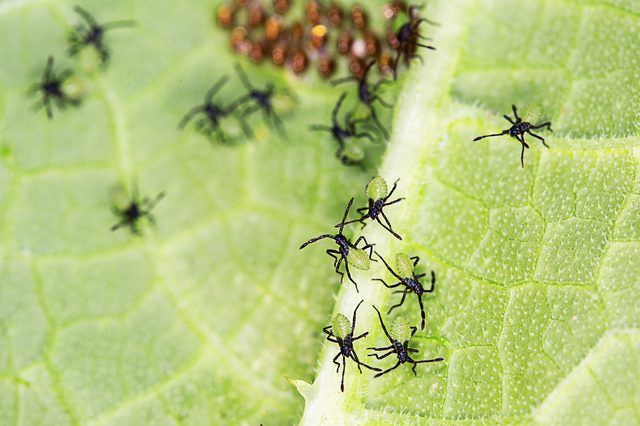
Consider planting a small trap crop of yellow summer squash to attract the bugs away from your other cucurbit plants. Once you spot a large number of the pests on the trap crop, cover the plants with a plastic bag and pull them from the soil. Toss the bag into a covered trash can to prevent the bugs from returning to your garden. Another simple trapping technique involves placing heavy cardboard or wooden boards around the bases of your cucurbit plants and leaving them overnight. Check the undersides of the boards early the next morning, knocking off any harboring pests into a pail of soapy water. Step on any squash bugs that you spot lingering on the soil.
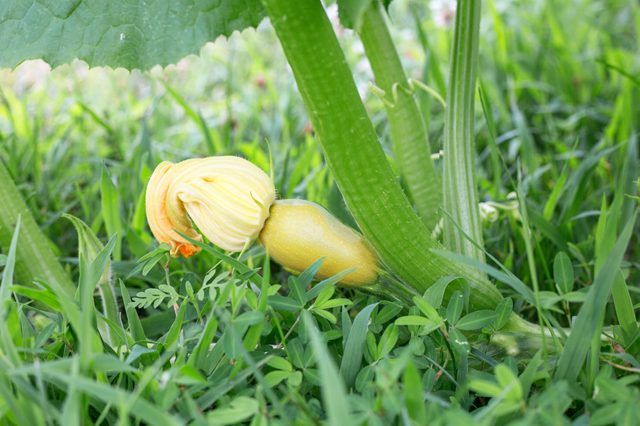
The experts at the Missouri Botanical Garden recommend spraying your cucurbit plants with insecticidal soap. Start spraying when the squash bugs first appear in spring and continue applying soap treatments every three days for about two weeks. Carefully follow the instructions and safety precautions on the manufacturer's label. One product recommends using 4 teaspoons of insecticidal soap concentrate with every 1 quart of water. Use a spray bottle or a small garden sprayer to thoroughly cover plant surfaces, including the undersides and tops of leaves, the stems, the vines and the fruit or vegetables. Insecticidal soaps only work on contact, so complete coverage is crucial for optimal control.
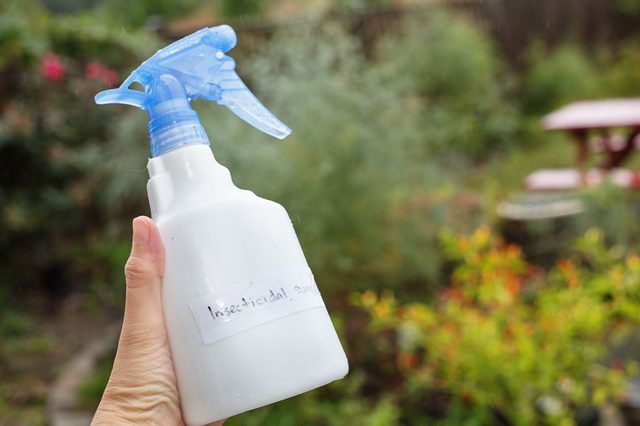
You can spray cucurbit plants with insecticidal soap up to the day of harvest, but avoid spraying stressed plants or you risk burning the foliage. Spray early in the morning or in the evening to avoid harming pollinating insects. Avoid spraying when temperatures are high. Although nontoxic to people and pets, insecticidal soap can still cause eye and skin irritation. Reduce your risk of exposure by wearing protective eyewear, waterproof gloves, shoes with socks, long sleeves, pants and a facemask. Play it safe and keep family members and animals out of the treatment area until the spray dries completely.
